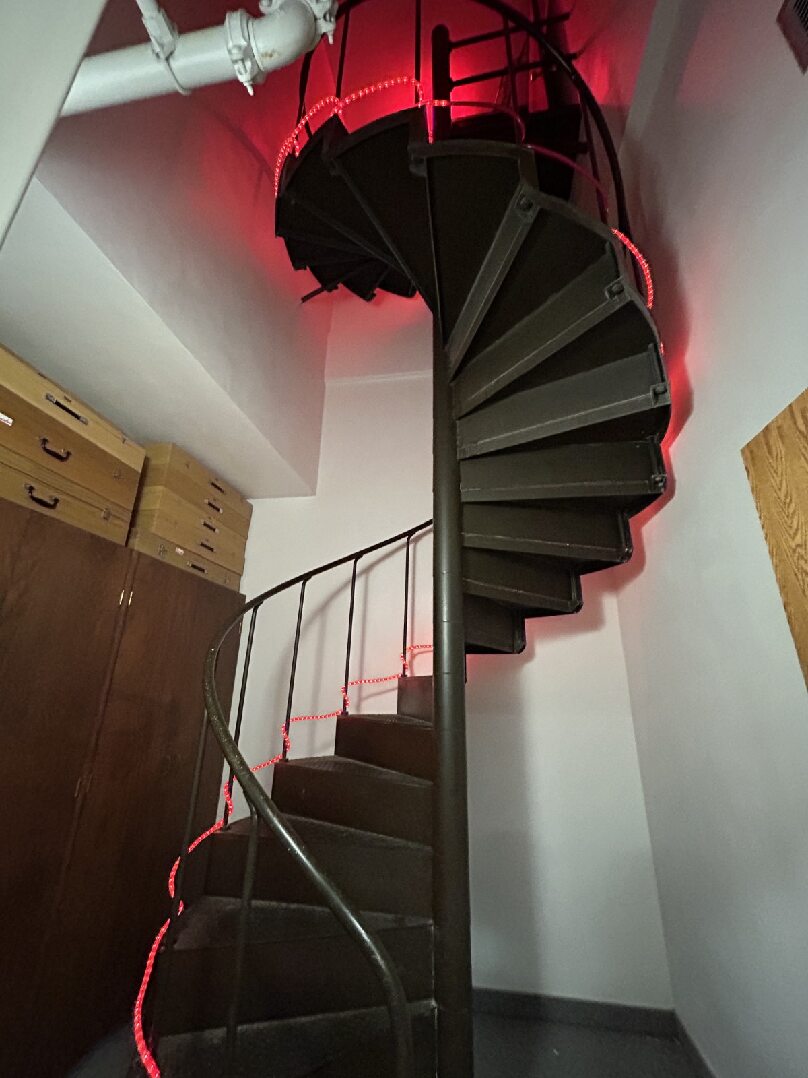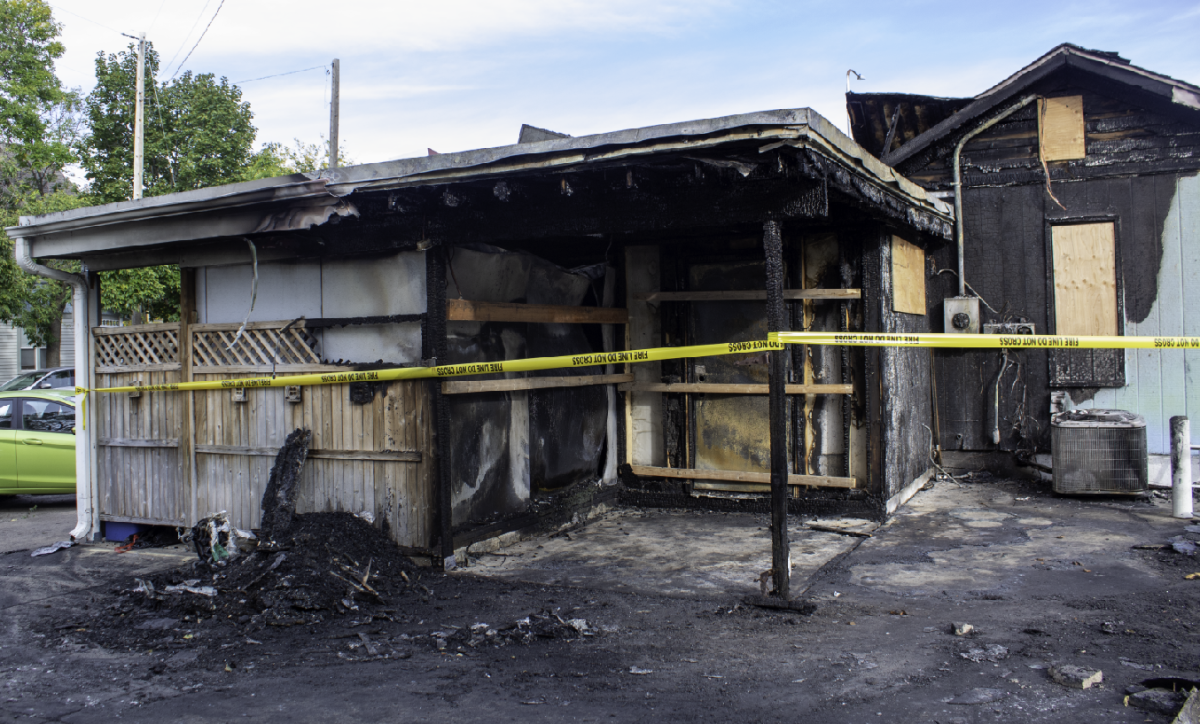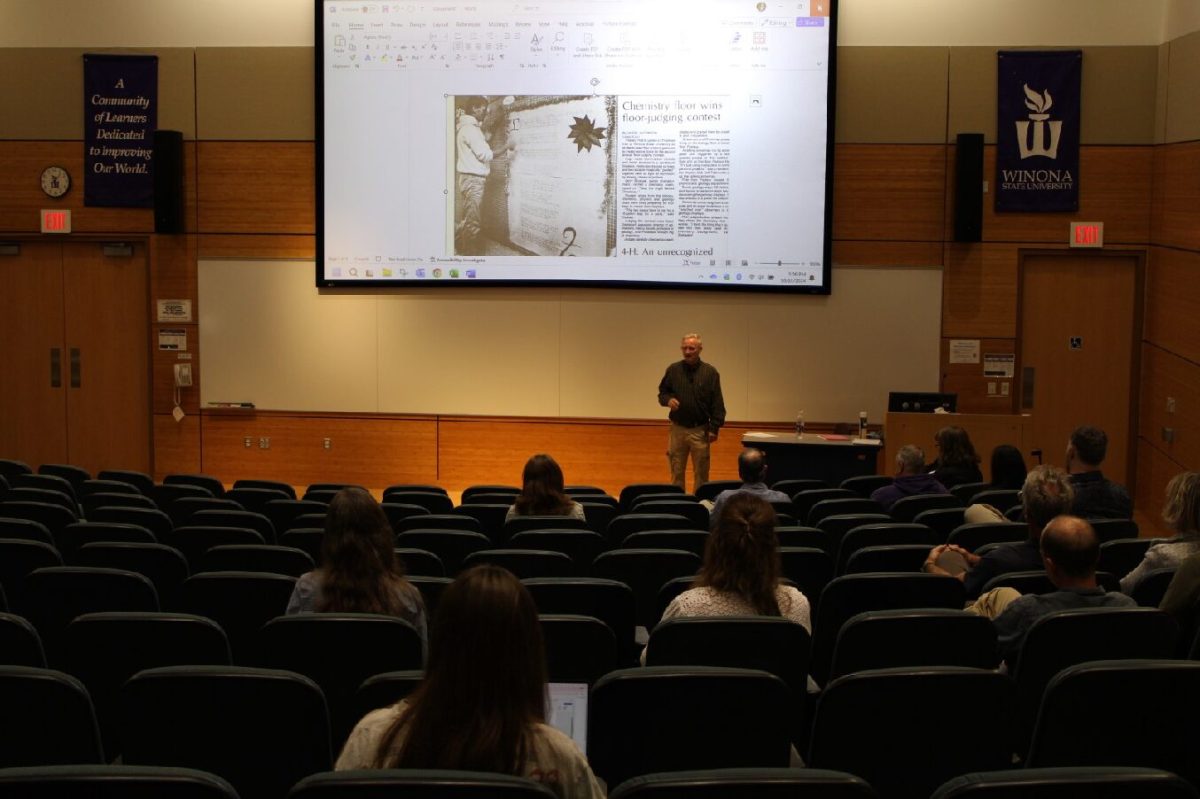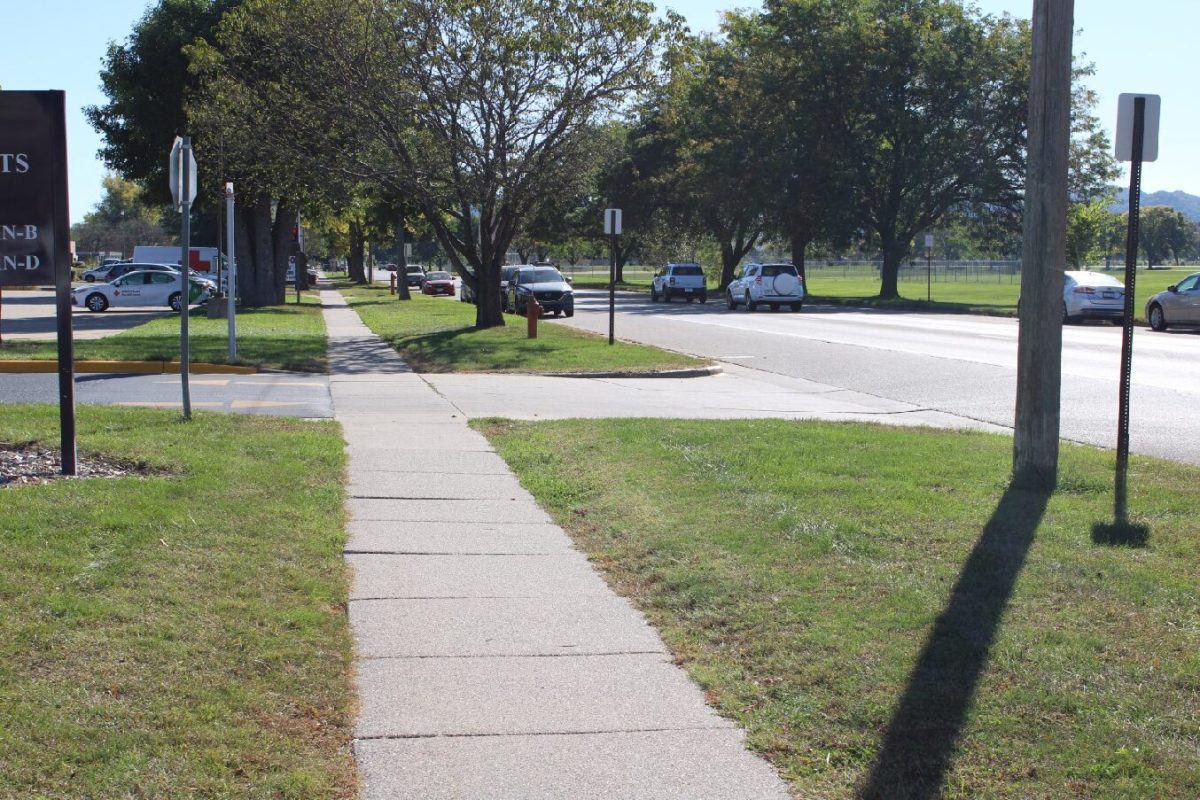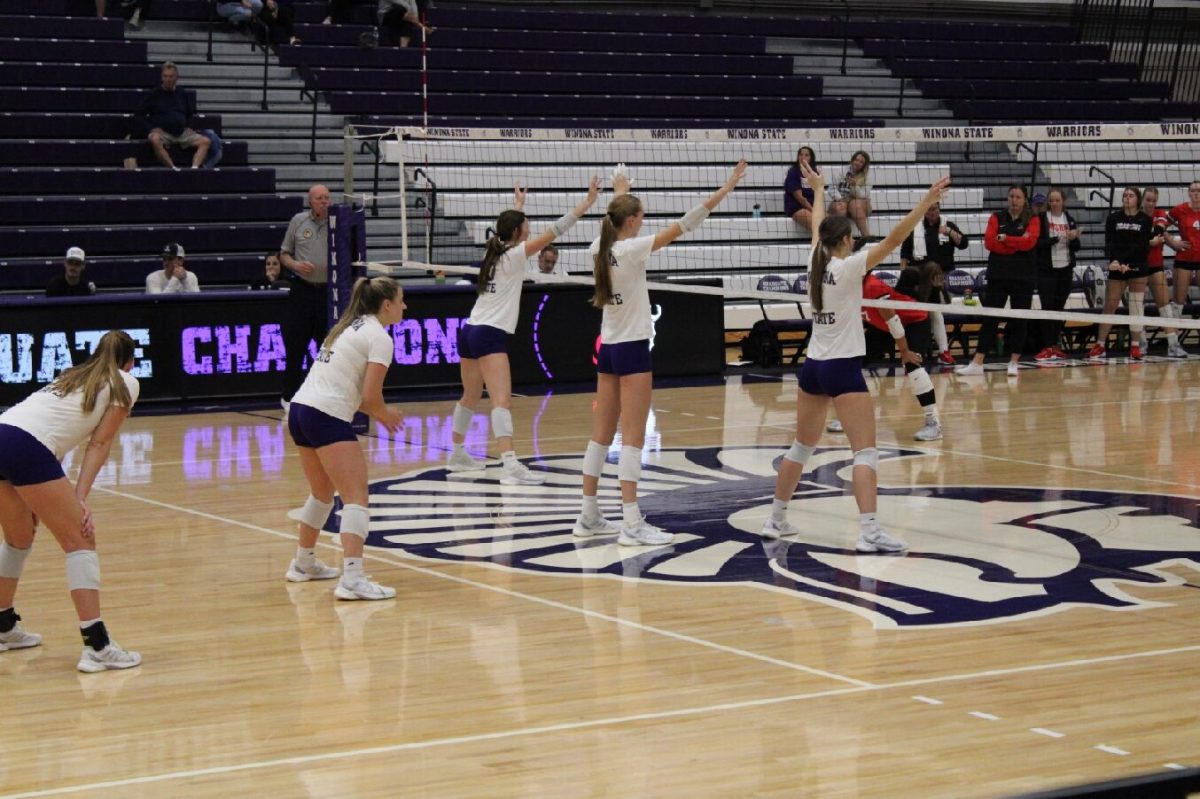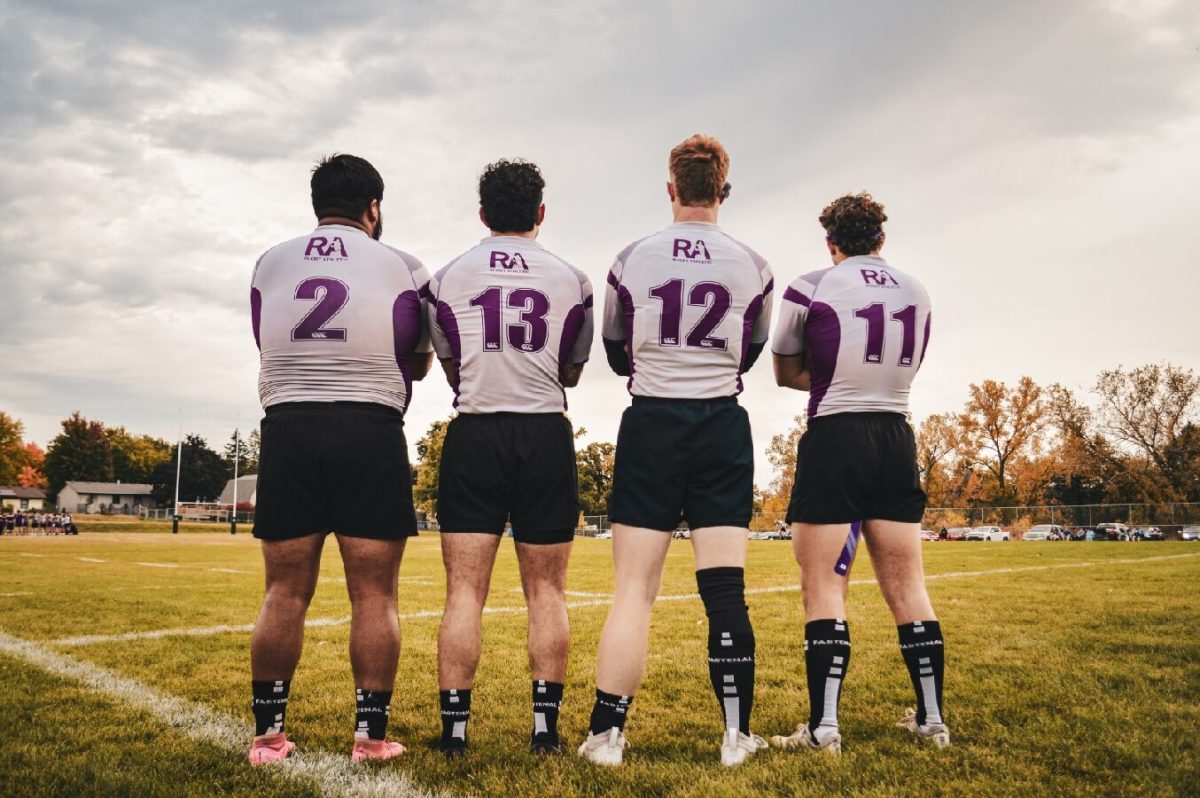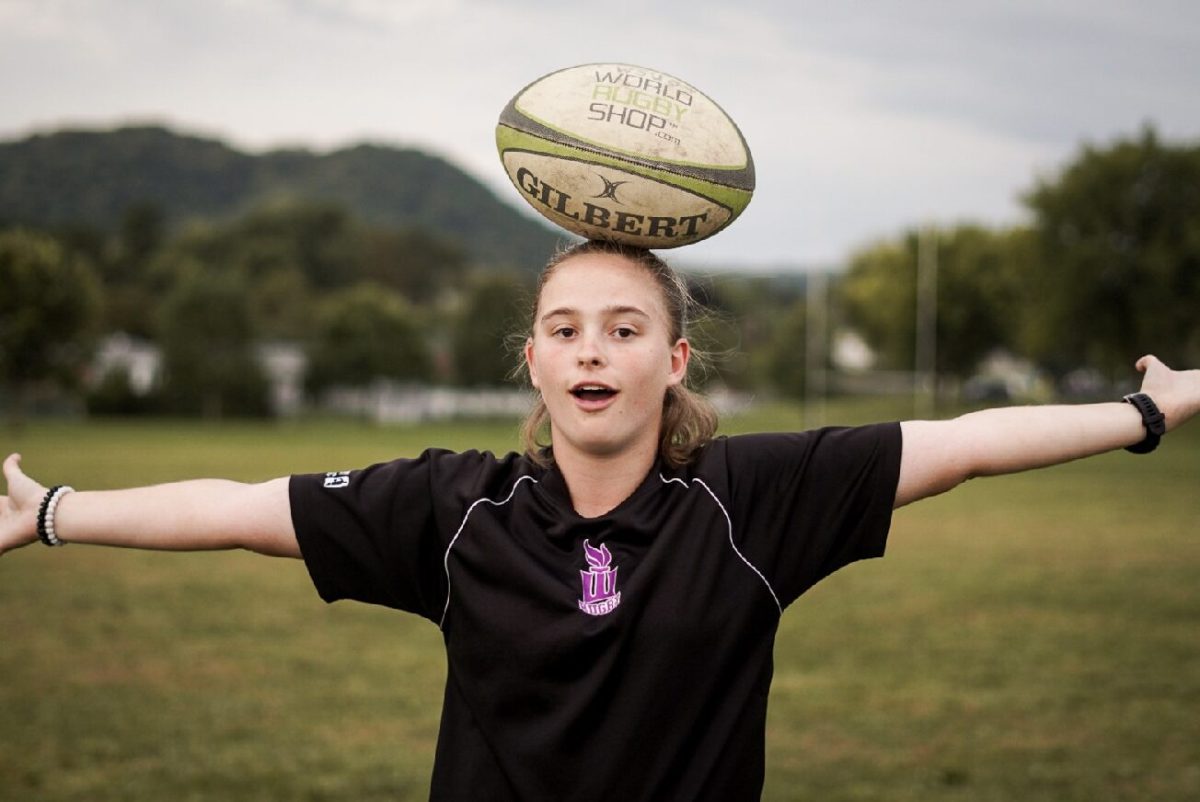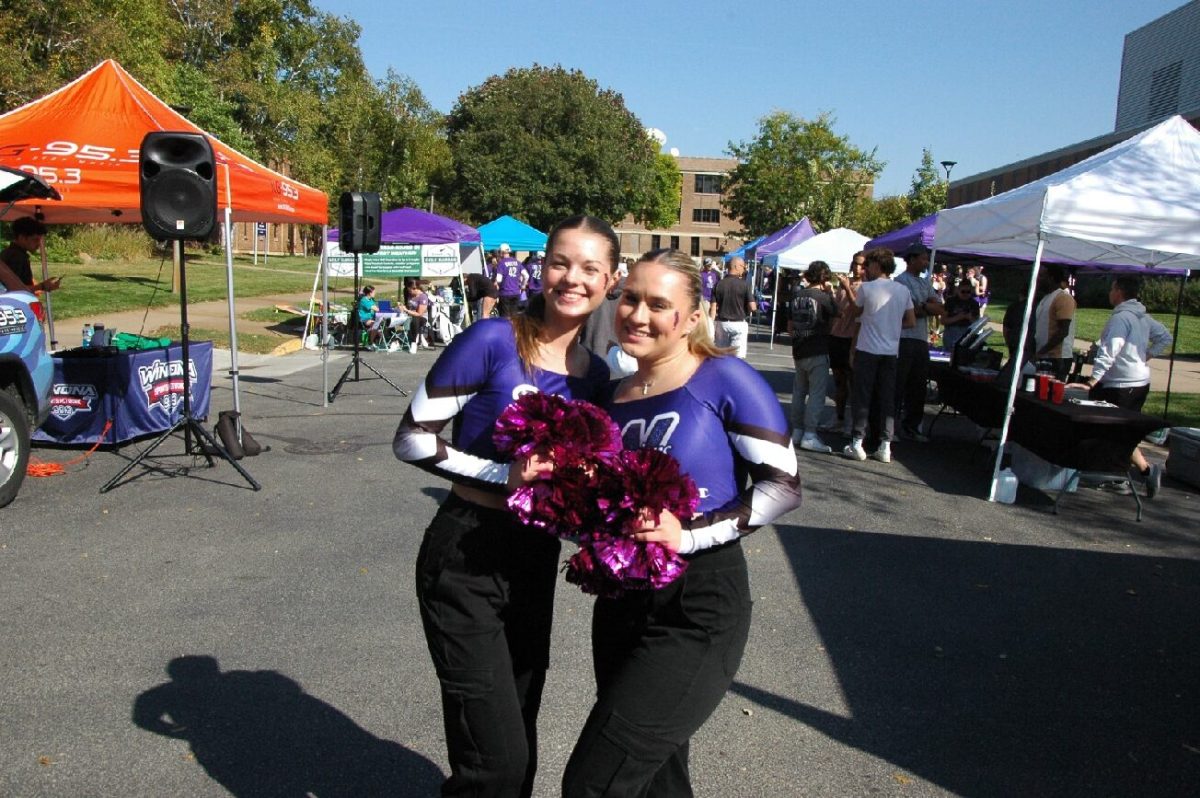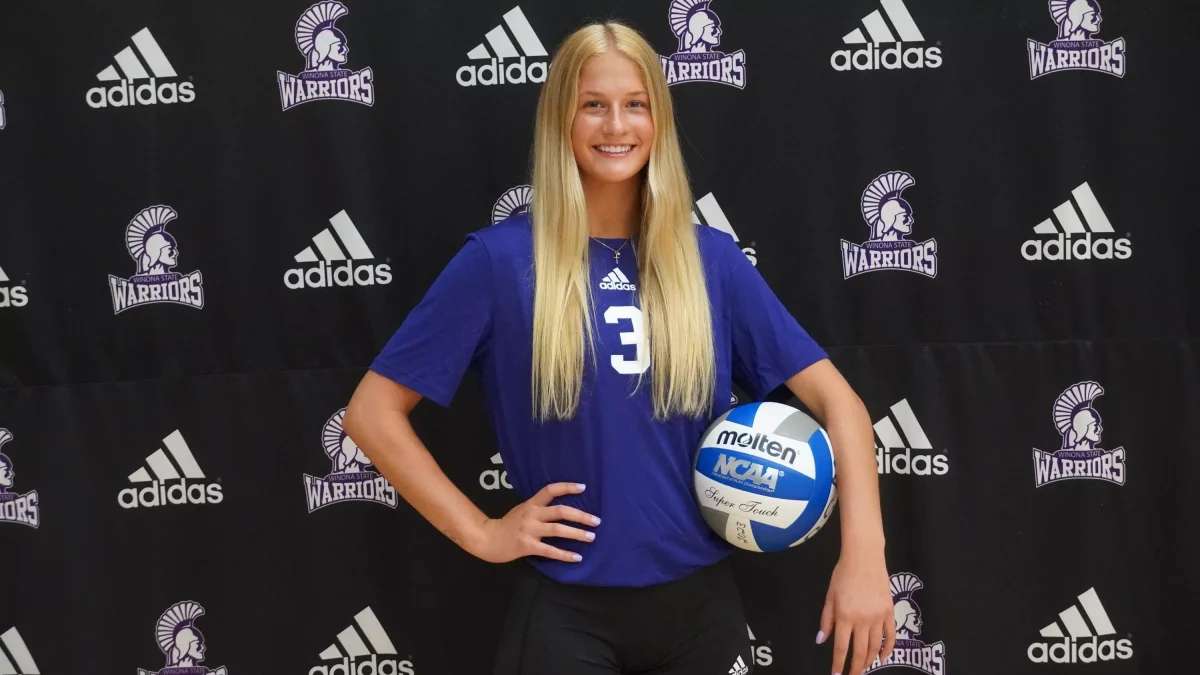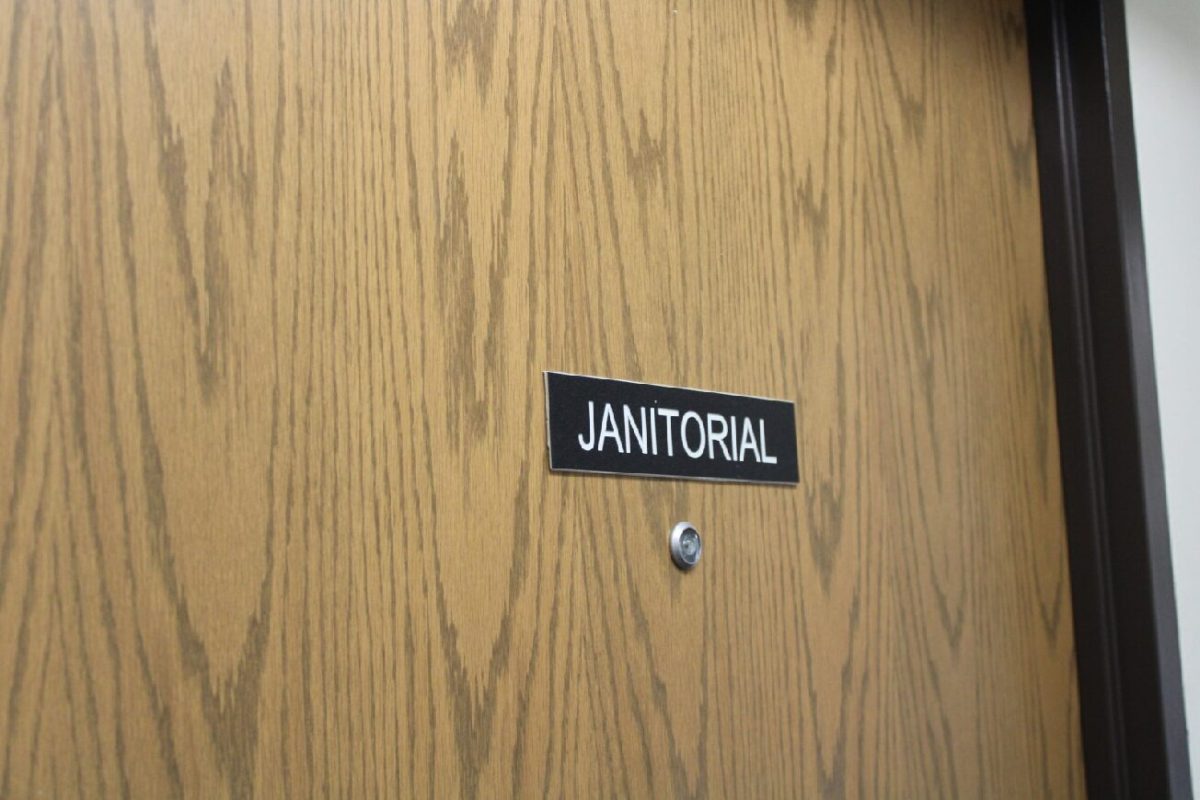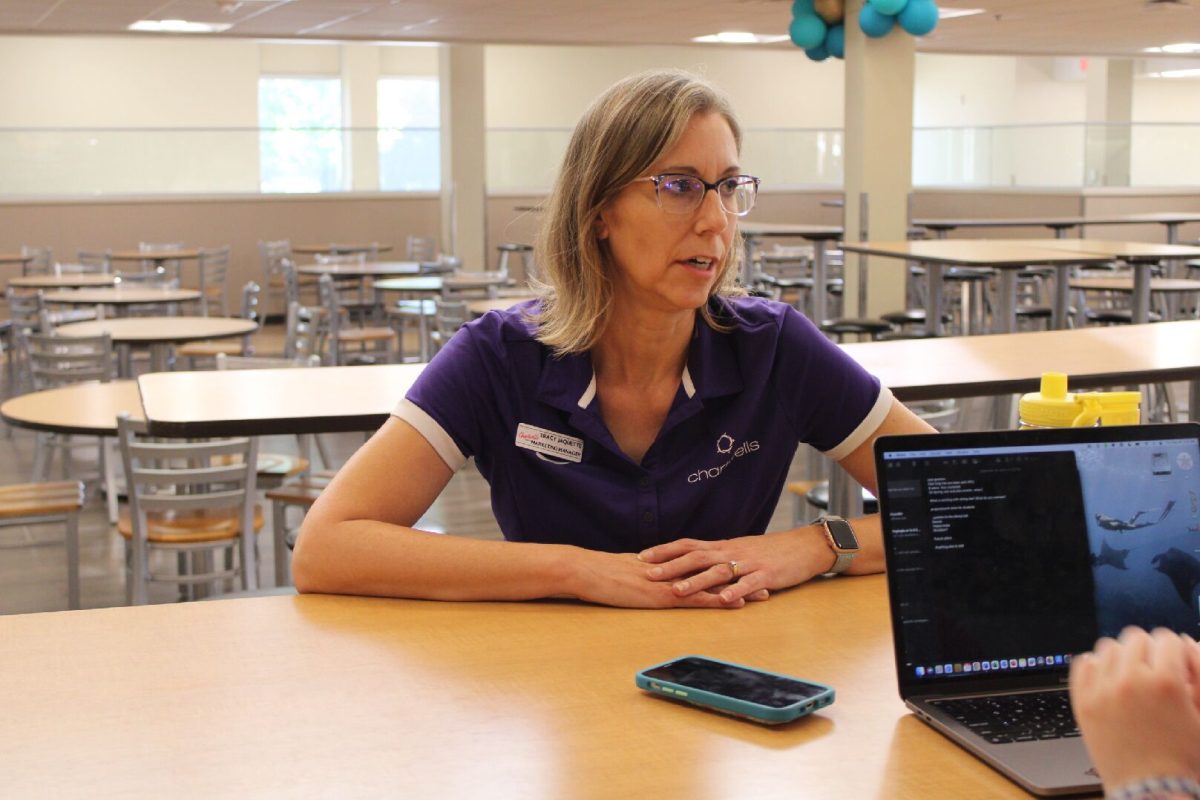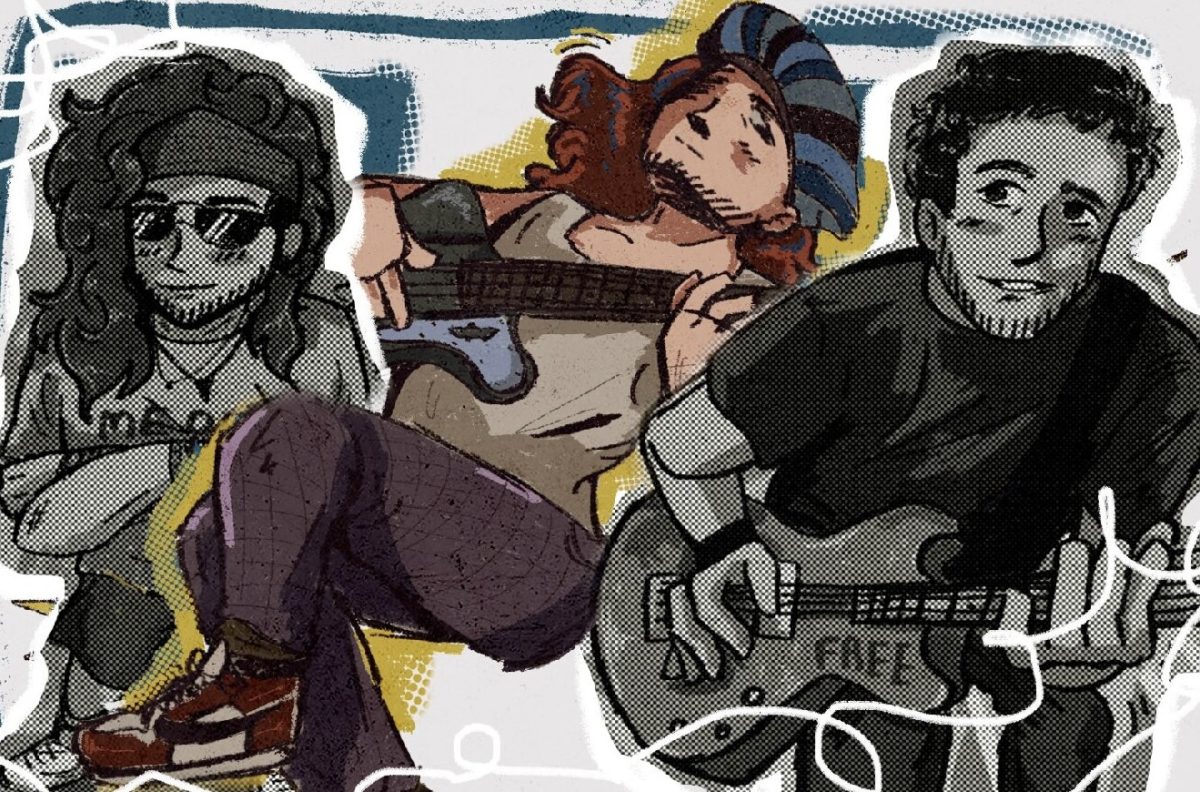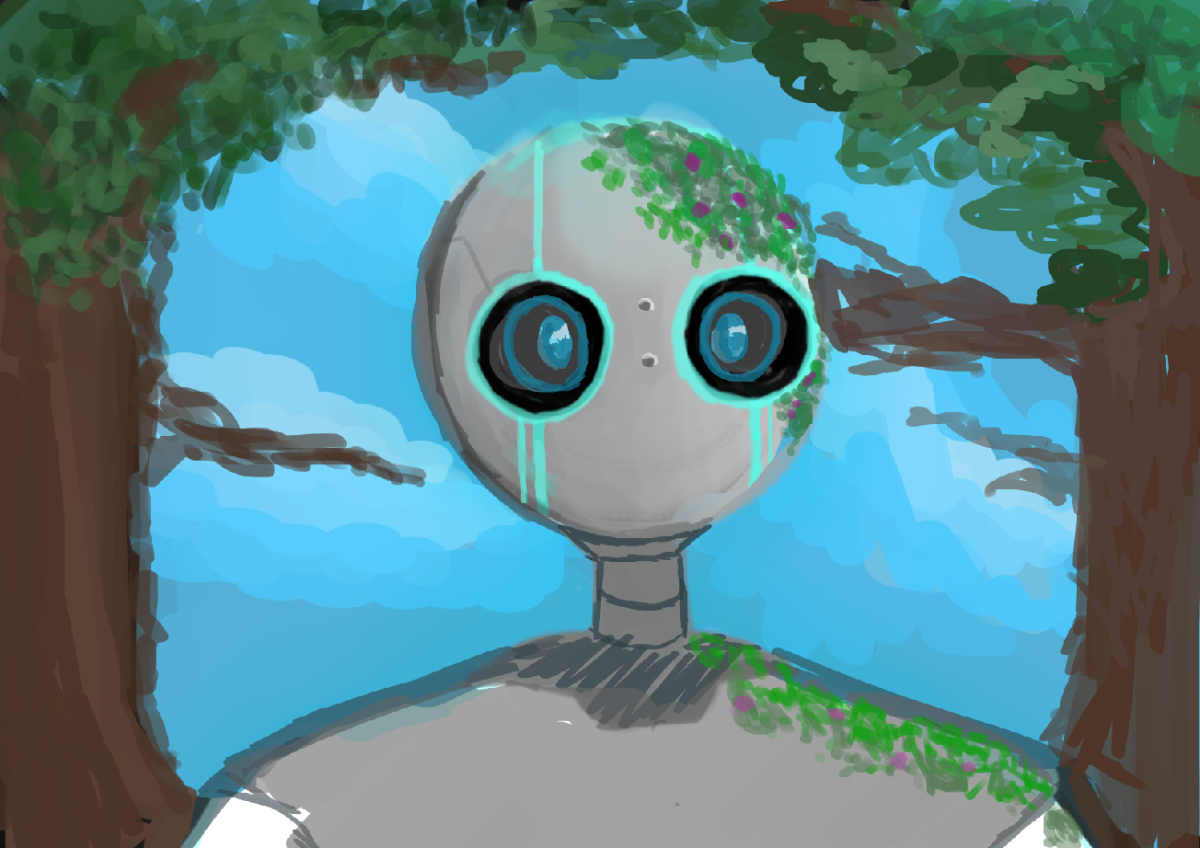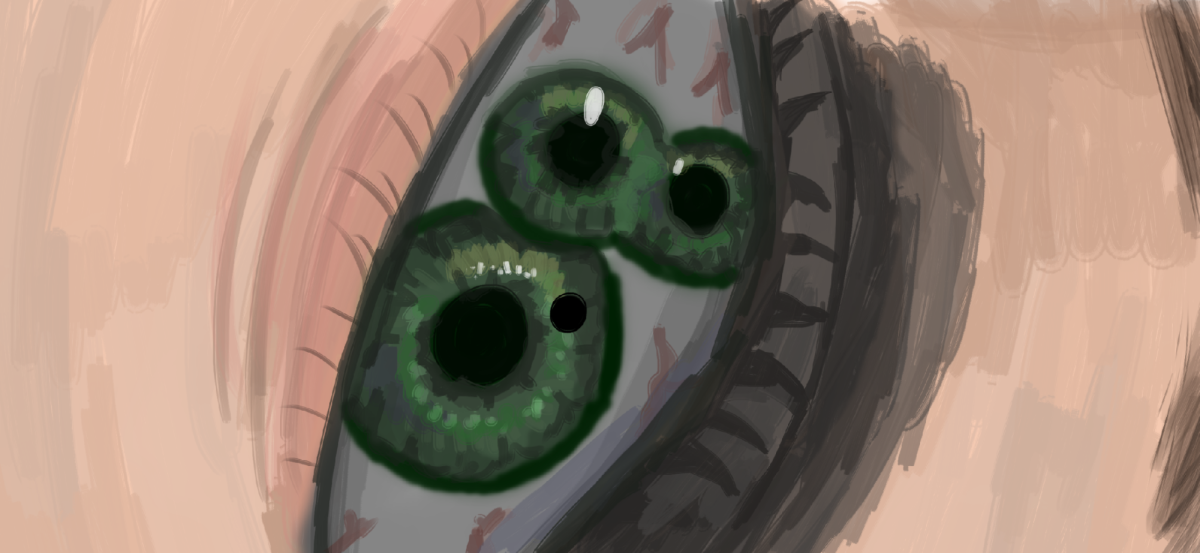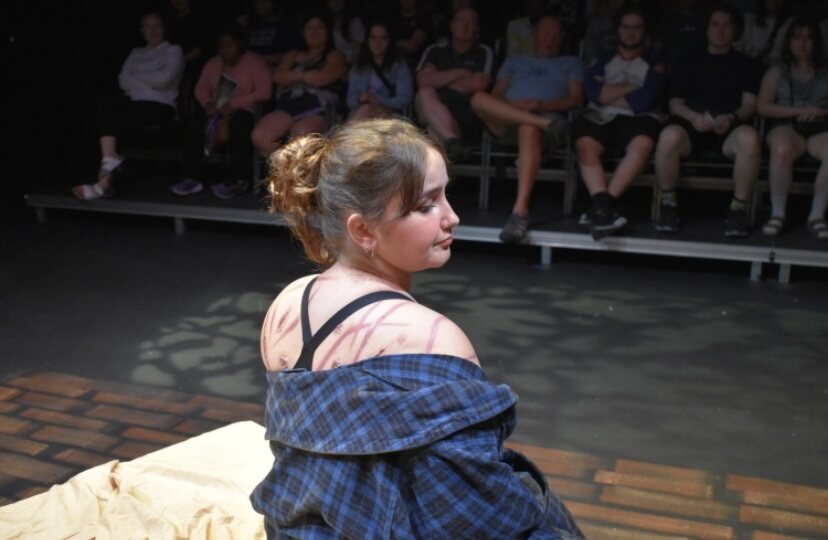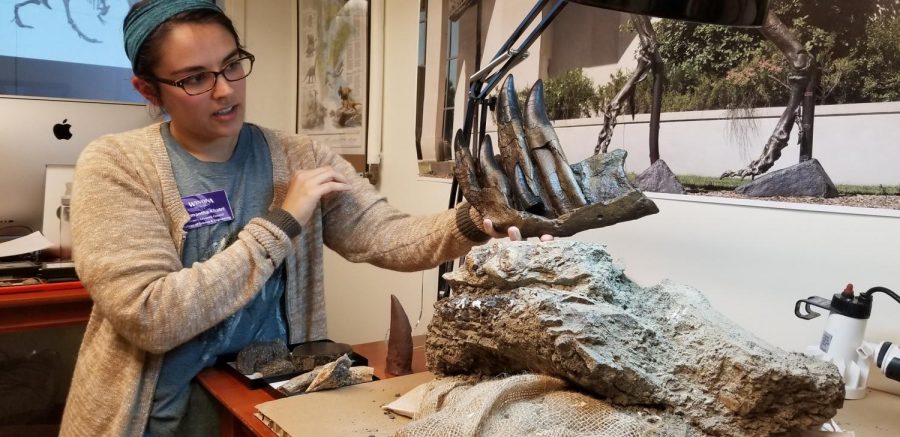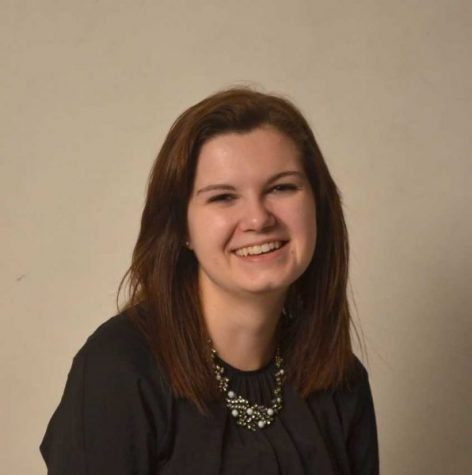Geoscience students dig up the past
Fifth-year geology major Samantha Khati examines a fossil found during a trip to the Hell Creek Formation near Marmarth, N.D. The geoscience department celebrated National Fossil Day last Wednesday, Oct. 11 in the Science Laboratory Center by showcasing fossils excavated by Winona State students, alumni and faculty.
October 18, 2017
Winona State University’s geoscience department celebrated National Fossil Day Wednesday, Oct. 11 in the Science Laboratory Center with an event showcasing fossils discovered by students, alumni and faculty.
The fossils were excavated from the 66-million-year-old rocks of the Hell Creek Formation near Marmarth, North Dakota with the help of Hell Creek Fossils, a fossil excavating company started by two Winona State alumni.
Geoscience professor W. Lee Beatty has been taking students to Hell Creek for four years. This year, they have five students going out to dig and collect fossils to learn more about older species.
“It’s a way of trying to get students into paleontology. By having them go out, actually doing research and handling dinosaur fossils,” Beatty said. “Individual fossils can tell us a lot. Teeth can tell us lots of information about the animal, such as what type of health they were in, what they ate and where they lived.”
Beatty said fossils show how specific dinosaurs died and show what the environment was like when they lived. Small fossils for turtles, crocodiles, fish and tiny mammals can show what type of ecosystem there was.
Hell Creek Fossils gives Winona State students the opportunity to participate in the dinosaur dig where others can come help discover fossils and prepare them in the field lab, according to Samantha Khatri, a fifth-year geology major.
“I liked how it was all field based and just the camping itself. You would wake up and go out to a site you were already working on because you found fossils or you would go to a different site because you were still searching,” Khatri said.
Students and others who go on the digs stay at a field camp consisting of a lab, kitchen, showers, a restroom and a volunteers’ tent in the badlands of North Dakota or Montana, Khatri said.
Winona State students brought back what they found and prepared the fossils in the labs at Winona State to use for their capstone research projects or for the dinosaur field paleontology course.
Jenna Adams, a junior communication arts and
literature teaching major from Beatty’s pale
ontology and dinosaurs class, was at the event identifying different teeth on display for a lab assignment.
“We have to say whether the teeth are from carnivores or herbivores and what they are used for,” Adams said.
Other fossils in the display included triceratops bones and fossils from turtles, as well as crocodile and dinosaur coprolites, also known as fossilized dung.
There was also a velociraptor tooth on display that was discovered by Khatri during the dig at Hell Creek in 2015 and 2016.
“Labs are completely different.” Khatri said. “To actually look down and see a fossil and know that

